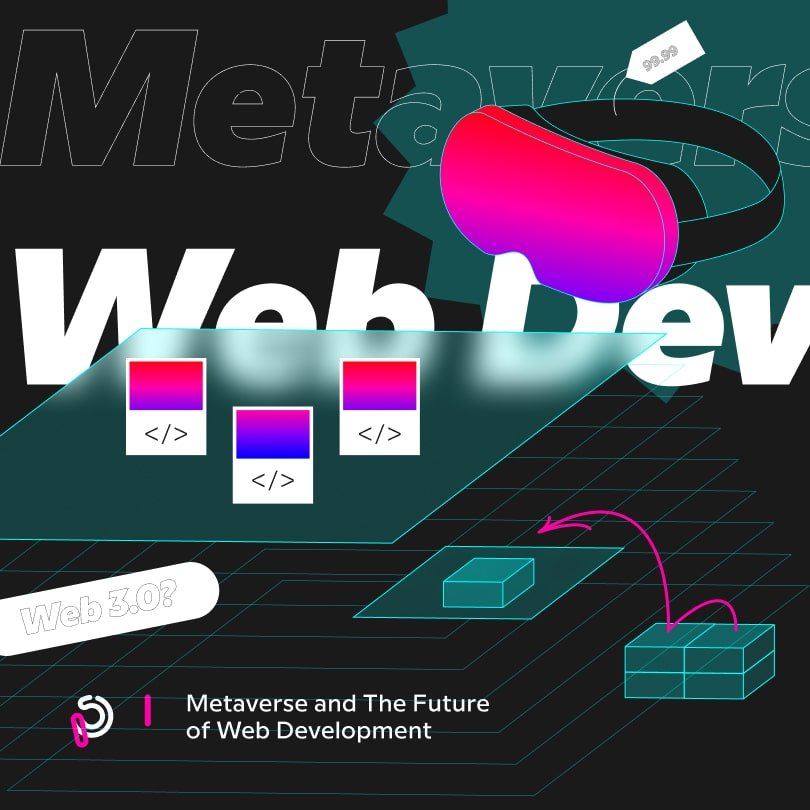What was once a farfetched scenario in Sci-Fi movies and futuristic novels is becoming a reality. Although Mark Zuckerberg didn’t invent it, he made it feel like we’re living in the future when in July 2021, he announced that Facebook is moving to the Metaverse.
Some find it exhilarating, but others fear this could be the first step towards materializing the dystopian Black Mirror television series. But despite the polarizing sentiments, the Metaverse market size will reach $800 billion by 2024.
JP Morgan and Goldman Sachs predicted that its worth could hit $1-12 trillion in the future, implying that these 3D technologies will infiltrate every sector to some extent. It’s no wonder large tech companies are increasingly interested in taking the Metaverse route.
Who is Jumping on the Metaverse Bandwagon?
Microsoft introduced its last Ignite edition called Mesh, a system that enables face-to-face interactions between participants from different geographic locales. Their ambitious project includes Holoportation and avatars and has the goal to build an immersive virtual collaboration.
Chinese technology giants are also placing their bet on the Metaverse. For instance, Alibaba led a $60 million investment round into augmented reality glasses maker Nreal.
The eagerness to be in the vanguard of this tech race is so powerful that Disney plans to create customized interactive attractions in its theme parks, and Zara launched its first Metacollection. Yet, Epic Games want to develop an open-standard metaverse and possibly replace the internet.
Although at this point, the Metaverse is still not tangible but rather an avant-garde concept, it’s already a multi-billion-dollar industry. Because of that, it’s critical to understand how it started and how it will impact the future of web development.
Before Meta, There Was Snow Crash
Contrary to what many people think, Zuckerberg’s Meta isn’t the genesis of the Metaverse. Even though he might be among the leaders of this innovative revolution, the idea itself is 30-years old.
The American novelist Neal Stephenson is the father of the Metaverse, and he coined this term in his bestseller Snow Crash. The novel centers around Hiro, a hacker and pizza delivery driver who lives in a dystopian future in Los Angeles and within the Metaverse.
Ironically, the story unfolds in the 21st century, after a worldwide economic collapse. Snow Crash develops an environment where capitalism and anarchism collide, and virtual reality becomes the successor of the internet.
Ernest Cline shared his Metaverse vision in 2011 with Ready Player One. Cline introduced the idea of the shared VR landscape named OASIS, which serves as an escape from a world devastated by global warming, economic stagnation, and an energy crisis.
Even though there are other compelling metaverse books, most of them share a common theme: a worldwide crisis. That coincides with the present moment, as the COVID-19 pandemic accelerated the Metaverse adoption timeline.
Therefore, it’s time to brace ourselves for a new realm. But to understand how it might play out in the real world, you must first know what it means.
What is the Metaverse?
The Metaverse was among the most influential buzzwords in the past few months. Yet, many people seem to struggle with understanding its meaning.
So far, it looks like everyone has their own definition and approach to building this 3D realm. In a nutshell, it’s the last stage of a revolution in online communications.
But it’s more accurate to describe the Metaverse as a shared online space where the physical, augmented, and virtual reality blend, enabling humans to interact as avatars. That’s why it blurs the line between the material and digital realm.
Although you might perceive it as a paradigm shift, the Metaverse is closer to the internet evolution. Because of that, it meets the criteria to break down economic, social, collaborative, and physical barriers.
However, this 3D virtual world doesn’t exist on its own. Instead, it depends on edge-cutting systems and technologies to power it.
Blockchain, cryptocurrency, AR, VR, artificial intelligence, 3D reconstruction, and the Internet of Things (IoT) are the key to Metaverse development and sustainability. However, developers could encounter various challenges, such as privacy control and identity authentication.
Here are the top five characteristics of the Metaverse:
- Interoperability – This unique 3D digital world enables participants to use their virtual assets across different Metaverse experiences.
- Synchronicity – The Metaverse users will be able to interact in real-time, feeling no difference between the digital and tangible world.
- Sophisticated Economy – Every participant, including businesses, will have the ability to use and exchange goods of real value in the Meta realm.
- Availability – Participants can join the Metaverse platform simultaneously as there will be no user limit.
- Persistence – Although the Metaverse can run out of resources, it exists regardless of place and time, and events will continue unfolding when a user logs out.

The Difference Between the Metaverse and Web 3.0
Even though people often use these two as interchangeable terms, Metaverse and Web 3.0 are different. The former is about how users will experience the internet in the future, and the latter is about who will control it.
According to Freethink, Web 1.0 existed between roughly 1991 and 2004, and people would use it to seek information and consume content. Yet, the number of creators was much smaller than consumers.
Web 2.0 is the one we have today, and user-generated content is its principal characteristic. Social media interactions, YouTube video creation and sharing, and public comment sections are the other dominant features.
The next step in web development is the decentralized internet. That means that internet users will no longer spend time on websites that own and monetize the content they create.
Instead, they will use search engines and social networks that give data control to the people by utilizing blockchains. Hence, internet users will explore digital worlds as 3D avatars and have complete ownership over their content.
The Metaverse and Web 3.0 have different meanings, but they’ll likely overlap. However, both will transform the internet experience we know today.
That is also a game-changer for web developers. Here’s how web development services will change in the future.
How the Metaverse Will Impact the Web Development Landscape?
Various things and activities that require physical reality now will be possible in the Metaverse world. Even though its concept feels abstract, it could become the new norm.
For example, people will attend virtual concerts, travel virtually, shop, and go to the movies in the Meta realm. The world of work will transform, streamlining collaborations and bringing international teams closer.
But the Metaverse also means more job opportunities and projects – Zuckerberg’s Meta will create 10,000 vacancies in the EU in the next five years.
As technologies that support the Metaverse grow, it will become increasingly important to understand the nature of its mechanisms. Moreover, that knowledge could make a difference in how fast people will find jobs in the future.
Web designers and developers should be at the forefront of adopting this tech. The 3D web content will inherently alter web development, creating a new landscape, and requiring these professionals to adjust.
The augmented and mixed reality combination will mark the beginning of an era where people can engage with a virtual product that businesses also place into physical spaces. Hence, the web development rules we know today will likely change.
The Metaverse will enhance most digital objects and add new functions and features to ensure users can interact seamlessly in the 3D realm. Although traditional websites won’t entirely cease to exist, they will have to become more immersive to coexist with the new technologies.
Nevertheless, web designers and developers will play a crucial role in designing these virtual items, Meta world websites, and better user interfaces and experiences. They should prepare to embrace a new tech stack and add VR/AR skills to their portfolios.
Otherwise, web developers and designers risk creating a suboptimal UX and staying behind the new technologies, tools, and trends. On the other hand, those who will make the most of the Metaverse opportunities and build expertise could thrive in the new world and choose their employers and clients.
After all, many companies will invest a fortune in Meta tech and methods. Therefore, their projects will require highly skilled web developers and designers.
For instance, MedTech, E-Commerce, and FinTech companies will struggle with business continuity if they fail to reach the innovation target. That creates stellar opportunities for web developers ready to work with AI and VR/VR technologies.
To Sum Up
The Metaverse will change the world in many ways and create a new one. It will enable immersive interactions and erase economic, social, and geographic obstacles.
However, it’s impossible to envision a detailed picture of the 3D virtual realm as the Metaverse is still in the early stages of development and is more of an abstract concept. Because of that, many people still fear how it will play out in real life and affect human interactions.
Although it raises doubts and questions, the impact of these technologies depends on how we will use them. At this point, it’s also unknown how accessible it will be and whether it will merge with web 3.0.
The Metaverse will undoubtedly create new challenges that are hard to fathom and prepare for without experiencing its world first-hand. But it will also provide numerous opportunities, especially for those with a knowledge of AI and VR/AR.
That’s why web developers and designers should be among the first adopters of these tech tools. Their skills and expertise play a significant role in the Metaverse development and maintenance.
But the possibilities of the 3D virtual realm will also enable these creative professionals to experiment with riveting visuals and explore their imagination on a higher level.





